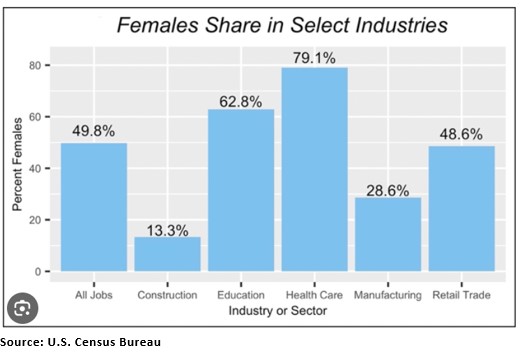U.S. Factories Booming, But Worker Shortage Persists
Before we get into today’s main discussion, let’s take a quick look at the latest jobs report for May. The report showed the economy added 339,000 new jobs as compared to 190,000 expected. The official unemployment rate rose to 3.7% from 3.4% in April.
It was a very strong report and does not suggest an economy headed for a recession anytime soon.
Now on to today’s topic on the continued rebound in US manufacturing and the troubles employers are having finding enough workers to fill their job openings.
US factories continue to roar back from the Covid plunge in 2020. That’s the good news. The bad news is manufacturers are scrambling to find enough workers to fill the job needs they have – even though the pace of hiring remains at levels not seen in decades.
There are between 11 and 13 million workers employed in US factories (depending on how you count them). Over the last year, manufacturing employment has been growing at about a 4% annual rate, the fastest sustained pace of growth since 1984 — when the sector had more than twice as large a share of total US jobs.

And manufacturing employers say they now are scrambling to fill even more jobs. The sector has had about 800,000 continuing unfilled openings for most of the last year, despite the hiring binge, according to the Labor Department’s report.
With supply chains causing problems throughout the global economy, many US companies that depended on overseas suppliers have been shifting their focus to sources of parts and goods much closer to home. But now more US manufacturers are facing labor shortages and can’t keep up with rising demand.
“It was taking months for parts to not only get manufactured [overseas] but come across and they decided they were willing to pay US manufacturing pricing to get that much faster,” said Hayden Jennison, production manager for Jennison Corporation, a Carnegie, Pennsylvania, company that makes everything from fire-fighting equipment to construction machinery.
He said there’s enough demand for his goods to staff an entire additional shift at the factory. But even though he’s paying $20 to $30 an hour he can’t find the workers he needs.
“Hiring has been a problem since 2020,” Jennison said. “Hiring experienced candidates that understand the industry, and understand what they’re doing, has been very difficult.”
“I think we’re in uncharted territory,” said Jay Timmons, CEO of the National Association of Manufacturers (NAM). “For every 100 job openings in the sector we only have 60 people who are looking. I think it’ll take quite a while to fill that pipeline.”
Timmons said that pay in the sector is up 5% over the course of the last year, and he expects it to keep rising as manufacturers scramble for skilled labor.
Experts say one of the biggest problems manufacturers face in attracting workers is their perception of the nature of the job.
“We often take a look at the images of manufacturing and we see the sparks flying and a welding environment and perhaps it’s a little bit dingy, dark. But by and large our manufacturing jobs today are high tech,” said Eric Esoda, CEO of a not-for-profit providing consulting and training services to small-and mid-size manufacturers in Pennsylvania.
One group which employers are looking to for more help: WOMEN. Manufacturing remains a male-dominated industry, with only 28.6% of hourly factory jobs held by women, according to NAM. But that’s up from 27% only two years ago, and NAM’s goal is raising the share of women workers on factory floors to 35% by 2030.

Today less than 10% of private sector jobs are in manufacturing, compared to more than 40% at the end of World War II. But it is still a key sector of the economy, one that pays much better than many others. The Labor Department reports the average weekly wage for manufacturing jobs is $1,250, or $65,000 annually — 11% more than private sector jobs overall, and 81% more than retail jobs.
But despite increases in pay, factories continue to grapple with a shortage of workers. This is not a new problem, and it remains to be seen how it will be solved.
The bottom line is this is not just a problem for manufacturers. It is much more widespread. There are hiring shortages in numerous industries today.
Finally, the leading cause of the overall worker shortfall, according to research by the Fed, is a surge in retirements. In a recent speech, Fed Chairman Jerome Powell noted that there are now about 3.5 million fewer people who either have a job or are looking for one compared with pre-pandemic trends. That’s a really big deal.
I’ll have more to say on this topic in the near future.
More By This Author:
Inflation Has Eroded Household & Business Confidence
U.S. Debt Limit Coming Faster Than Expected
Another Debt Ceiling Showdown – They Just Never Learn



